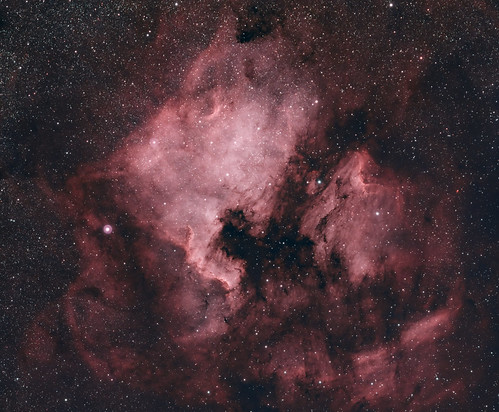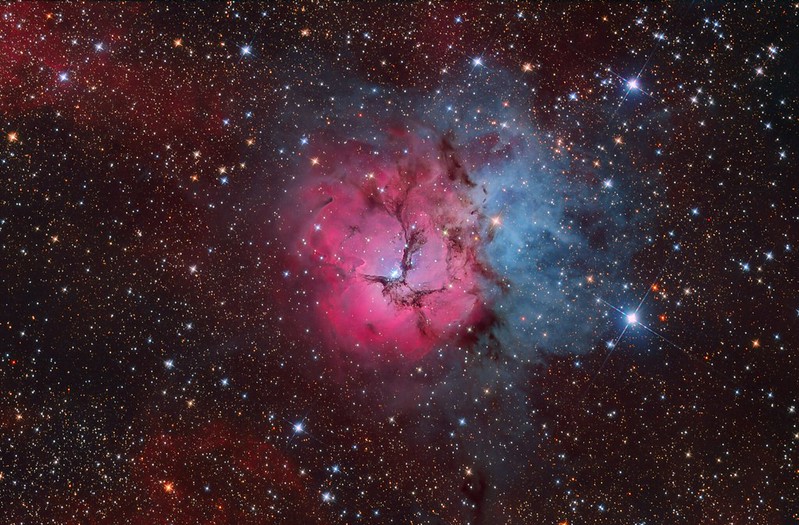Submissions: 2023 July
Re: Submissions: 2023 July
M44 - Beehive Cluster, The New Bees
Location
Front Garden, London UK
Dates:
Feb. 25, 2023 · Feb. 26, 2023
Frames:
97×180″(4h 51′)
77×300″(6h 25′)
Integration:
11h 56′
Imaging Telescope
William Optics RedCat 51 II
Imaging Cameras
ZWO ASI2600MC Pro
Mounts
Celestron Advanced VX
Software
Open PHD Guiding Project PHD2 · Pleiades Astrophoto PixInsight · Russell Croman Astrophotography BlurXTerminator · Russell Croman Astrophotography NoiseXTerminator
Copyright: Hamza Ilyas
Location
Front Garden, London UK
Dates:
Feb. 25, 2023 · Feb. 26, 2023
Frames:
97×180″(4h 51′)
77×300″(6h 25′)
Integration:
11h 56′
Imaging Telescope
William Optics RedCat 51 II
Imaging Cameras
ZWO ASI2600MC Pro
Mounts
Celestron Advanced VX
Software
Open PHD Guiding Project PHD2 · Pleiades Astrophoto PixInsight · Russell Croman Astrophotography BlurXTerminator · Russell Croman Astrophotography NoiseXTerminator
Copyright: Hamza Ilyas
-
KuriousGeorge
- Science Officer
- Posts: 218
- Joined: Wed Dec 30, 2015 7:07 am
- Location: San Diego, CA
- Contact:
Re: Submissions: 2023 July
Crescent Nebula. KG Observatory, Julian, CA.
Here's the conclusion of my week-long project to gather deep data for the Crescent Nebula in the excellent Julian, CA skies. Here I saw 21.3+ SQM with FWHM on 5-min subs between 1" and 2'" for 6 days.
I particularly focused on OIII to help expose more of the faint nebulosity I've seen in other postings.
RGB was screened over the top for a deep and colorful star field.
"The Crescent Nebula (also known as NGC 6888, Caldwell 27, Sharpless 105) is an emission nebula in the constellation Cygnus, about 5,000 light-years away from Earth. It was discovered by William Herschel in 1792. It is formed by the fast stellar wind from the Wolf-Rayet star WR 136 (HD 192163) colliding with and energizing the slower moving wind ejected by the star when it became a red giant around 250,000 to 400,000 years ago. The result of the collision is a shell and two shock waves, one moving outward and one moving inward. The inward moving shock wave heats the stellar wind to X-ray-emitting temperatures".
https://www.astrobin.com/7056rh/
Here's the conclusion of my week-long project to gather deep data for the Crescent Nebula in the excellent Julian, CA skies. Here I saw 21.3+ SQM with FWHM on 5-min subs between 1" and 2'" for 6 days.
I particularly focused on OIII to help expose more of the faint nebulosity I've seen in other postings.
RGB was screened over the top for a deep and colorful star field.
"The Crescent Nebula (also known as NGC 6888, Caldwell 27, Sharpless 105) is an emission nebula in the constellation Cygnus, about 5,000 light-years away from Earth. It was discovered by William Herschel in 1792. It is formed by the fast stellar wind from the Wolf-Rayet star WR 136 (HD 192163) colliding with and energizing the slower moving wind ejected by the star when it became a red giant around 250,000 to 400,000 years ago. The result of the collision is a shell and two shock waves, one moving outward and one moving inward. The inward moving shock wave heats the stellar wind to X-ray-emitting temperatures".
https://www.astrobin.com/7056rh/
-
daniele.borsari
-
tommasostella
- Ensign
- Posts: 56
- Joined: Mon Nov 11, 2019 4:34 pm
Re: Submissions: 2023 July
Sh2-136 (vdb 141 - Ghost nebula)
Author: Tommaso Stella
Url: https://www.facebook.com/tommaso.m.stella
Location: Stigliano Matera - Italy
Date: July 2023
---------------------------------
Lights: 86x300s
Total exposure: 7.2 h
Telescope: SkyWatcher 250/1000 + GPU Coma Corrector
Camera: Omegon veTEC 571C V3+V4
Filters: Optolong L-CCD
Mount: Skywatcher AZ-EQ6 GT
Processing: DeepSkyStacker, PixInsight, Photoshop CC
Author: Tommaso Stella
Url: https://www.facebook.com/tommaso.m.stella
Location: Stigliano Matera - Italy
Date: July 2023
---------------------------------
Lights: 86x300s
Total exposure: 7.2 h
Telescope: SkyWatcher 250/1000 + GPU Coma Corrector
Camera: Omegon veTEC 571C V3+V4
Filters: Optolong L-CCD
Mount: Skywatcher AZ-EQ6 GT
Processing: DeepSkyStacker, PixInsight, Photoshop CC
-
Galactic-Hunter
- Ensign
- Posts: 26
- Joined: Wed Jul 08, 2020 3:13 pm
Re: Submissions: 2023 July
I have never seen images of M24 that were very impressive or had much nebulosity in the background, which is strange because it lies in the bright and colorful Milky Way band.
M24 is located about 10,000 light years away in the constellation Sagittarius. It is 600 light-years wide and is not considered a deep sky object but instead a star cloud. Only 3 entries in the Messier catalog are not considered objects.
I decided to use my fast f/2 telescope under Bortle 2 skies to image Messier 24 for 12.5 hours over several clear nights. The fast optics and dark skies were a great combo to get very high quality data, and the single shots looked nice. I could only see one bit of nebulosity on the Master file once I stacked everything, so I was hoping that processing the target properly would reveal much more.
Some dark clouds and an obvious nebula on the bottom right could be seen on the master file, but not much else. This is because M24 is such a dense region of the sky, where thousands of individual stars can be seen through a single field of view through binoculars. These thousands of stars completely hide the potential beauty that is hidden in the background.
I started processing the image, until it was time to temporarily remove the stars using StarXTerminator. So many stars were visible on the star mask that it almost looked like a regular deep sky image all by itself, despite being just a mask!
Once the stars were removed, I was completely shocked by the amount of nebulosity that was now visible in the background. So much gasses all over the field of view! I did my best to carefully process the data and enhance the details and colors as best as possible.
There are so many bits of nebula of all shapes that can be seen all over the image which is beautiful. I then added the stars back on, and the final result can be seen here.
 The Hidden Beauty behind the Sagittarius Star Cloud
The Hidden Beauty behind the Sagittarius Star Cloud
Credit:
Antoine and Dalia Grelin
https://www.galactic-hunter.com/
M24 is located about 10,000 light years away in the constellation Sagittarius. It is 600 light-years wide and is not considered a deep sky object but instead a star cloud. Only 3 entries in the Messier catalog are not considered objects.
I decided to use my fast f/2 telescope under Bortle 2 skies to image Messier 24 for 12.5 hours over several clear nights. The fast optics and dark skies were a great combo to get very high quality data, and the single shots looked nice. I could only see one bit of nebulosity on the Master file once I stacked everything, so I was hoping that processing the target properly would reveal much more.
Some dark clouds and an obvious nebula on the bottom right could be seen on the master file, but not much else. This is because M24 is such a dense region of the sky, where thousands of individual stars can be seen through a single field of view through binoculars. These thousands of stars completely hide the potential beauty that is hidden in the background.
I started processing the image, until it was time to temporarily remove the stars using StarXTerminator. So many stars were visible on the star mask that it almost looked like a regular deep sky image all by itself, despite being just a mask!
Once the stars were removed, I was completely shocked by the amount of nebulosity that was now visible in the background. So much gasses all over the field of view! I did my best to carefully process the data and enhance the details and colors as best as possible.
There are so many bits of nebula of all shapes that can be seen all over the image which is beautiful. I then added the stars back on, and the final result can be seen here.
 The Hidden Beauty behind the Sagittarius Star Cloud
The Hidden Beauty behind the Sagittarius Star CloudCredit:
Antoine and Dalia Grelin
https://www.galactic-hunter.com/
- Chris Peterson
- Abominable Snowman
- Posts: 18226
- Joined: Wed Jan 31, 2007 11:13 pm
- Location: Guffey, Colorado, USA
- Contact:
Re: Submissions: 2023 July
C/2023 E1 (ATLAS)
A pretty comet, now quite bright. Imaged 2023-07-23 UT 06:28 (sequence center) moving slowly through Draco. Prominent ion tail, no visible dust tail.
Details:
QSI 660 camera on 250mm RC, Astronomic RGB filters
RGB (12 60-second subs each)
Processed with PixInsight and Photoshop
Final image resolution 0.93 arcsec/pixel, 21 arcminute wide field
_
A pretty comet, now quite bright. Imaged 2023-07-23 UT 06:28 (sequence center) moving slowly through Draco. Prominent ion tail, no visible dust tail.
Details:
QSI 660 camera on 250mm RC, Astronomic RGB filters
RGB (12 60-second subs each)
Processed with PixInsight and Photoshop
Final image resolution 0.93 arcsec/pixel, 21 arcminute wide field
_
Chris
*****************************************
Chris L Peterson
Cloudbait Observatory
https://www.cloudbait.com
*****************************************
Chris L Peterson
Cloudbait Observatory
https://www.cloudbait.com
Re: Submissions: 2023 July
Very nice, Chris!Chris Peterson wrote: ↑Tue Jul 25, 2023 12:18 am C/2023 E1 (ATLAS)
A pretty comet, now quite bright. Imaged 2023-07-23 UT 06:28 (sequence center) moving slowly through Draco. Prominent ion tail, no visible dust tail.
Details:
QSI 660 camera on 250mm RC, Astronomic RGB filters
RGB (12 60-second subs each)
Processed with PixInsight and Photoshop
Final image resolution 0.93 arcsec/pixel, 21 arcminute wide field
_
c_2023e1_20230723_clp.jpg
The comet has a prominent ion tail, you say. Well, the tail may be prominent, but it is completely non-blue. Is the comet close to perihelion? If not, then I guess we can expect both tails to grow.
Ann
Color Commentator
- Chris Peterson
- Abominable Snowman
- Posts: 18226
- Joined: Wed Jan 31, 2007 11:13 pm
- Location: Guffey, Colorado, USA
- Contact:
Re: Submissions: 2023 July
The comet is just a few weeks past perihelion. Its brightness has been pretty stable and is just starting to decline slightly. I wonder if my image is catching a very faint, slightly elongated dusty coma or tail, though.Ann wrote: ↑Tue Jul 25, 2023 3:27 amVery nice, Chris! :D It is interesting that your image makes the nucleus look elongated and binary. Perhaps we are seeing a "double outflow" of gas from different parts of the rocky body?Chris Peterson wrote: ↑Tue Jul 25, 2023 12:18 am C/2023 E1 (ATLAS)
A pretty comet, now quite bright. Imaged 2023-07-23 UT 06:28 (sequence center) moving slowly through Draco. Prominent ion tail, no visible dust tail.
Details:
QSI 660 camera on 250mm RC, Astronomic RGB filters
RGB (12 60-second subs each)
Processed with PixInsight and Photoshop
Final image resolution 0.93 arcsec/pixel, 21 arcminute wide field
_
c_2023e1_20230723_clp.jpg
The comet has a prominent ion tail, you say. Well, the tail may be prominent, but it is completely non-blue. Is the comet close to perihelion? If not, then I guess we can expect both tails to grow.
Ann
UPDATE: The apparently binary nucleus is actually just the result of the fact that it's passing very close a star. (Not literally, of course!)
Last edited by Chris Peterson on Wed Jul 26, 2023 12:31 am, edited 1 time in total.
Chris
*****************************************
Chris L Peterson
Cloudbait Observatory
https://www.cloudbait.com
*****************************************
Chris L Peterson
Cloudbait Observatory
https://www.cloudbait.com
Re: Submissions: 2023 July
Waxing Crescent & Venus Conjunction at Nautical Twilight
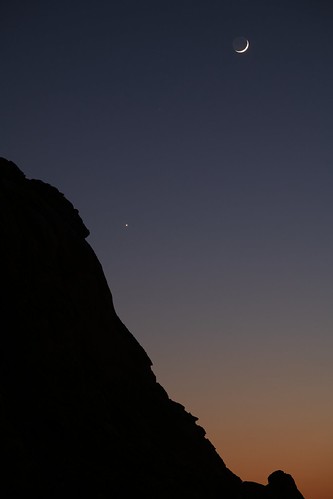 Waxing Crescent in conjunction with Venus at Nautical Twilight by Ahmed Waddah, on Flickr
Waxing Crescent in conjunction with Venus at Nautical Twilight by Ahmed Waddah, on Flickr
Nikon D850
Rokinon 135 f/2
ISO 400 - 0.4 sec - f/5.6
20th July 2023
Al Fayoum Desert, Egypt
https://www.astrobin.com/56i79d/
Facebook: https://www.facebook.com/waddah.photography
Astrobin: https://www.astrobin.com/users/WolfHeart/
IG: https://www.instagram.com/waddahphotography/
 Waxing Crescent in conjunction with Venus at Nautical Twilight by Ahmed Waddah, on Flickr
Waxing Crescent in conjunction with Venus at Nautical Twilight by Ahmed Waddah, on FlickrNikon D850
Rokinon 135 f/2
ISO 400 - 0.4 sec - f/5.6
20th July 2023
Al Fayoum Desert, Egypt
https://www.astrobin.com/56i79d/
Facebook: https://www.facebook.com/waddah.photography
Astrobin: https://www.astrobin.com/users/WolfHeart/
IG: https://www.instagram.com/waddahphotography/
-
Nicolas puig
- Asternaut
- Posts: 2
- Joined: Tue Aug 23, 2022 7:50 pm
Re: Submissions: 2023 July
Barnard 344 HOO-rgb stars
https://www.astrobin.com/uorg1m/

https://cdn.astrobin.com/thumbs/4MMeBpF ... SQIJ22.jpg
Clear Sky
PUIG Nicolas
https://www.astrobin.com/uorg1m/

https://cdn.astrobin.com/thumbs/4MMeBpF ... SQIJ22.jpg
Clear Sky
PUIG Nicolas
Last edited by bystander on Wed Jul 26, 2023 7:46 pm, edited 1 time in total.
Reason: Please no hot links to images > 500 kb. Substituted smaller image.
Reason: Please no hot links to images > 500 kb. Substituted smaller image.
Re: Submissions: 2023 July
Portrait of the Galactic Core over Egyptian Sands
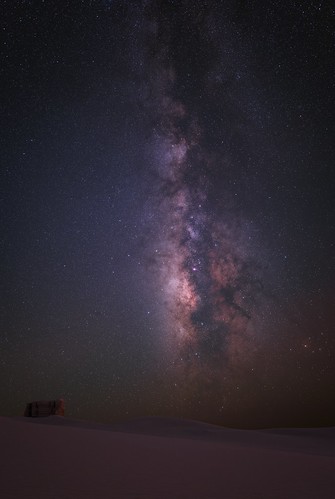 Portrait of the Galactic Core over Egyptian Sands by Ahmed Waddah, on Flickr
Portrait of the Galactic Core over Egyptian Sands by Ahmed Waddah, on Flickr
Image is a blended composite where foreground was imaged during blue hour and Sky was imaged later that night. Image was taken in Al Fayoum Desert at Qussor Al Arab on the 14th of July in Egypt. This is a vertical shot of the Milkyway as we are late July and close to the second half of Milkyway season.
Sky 1x90" - ISO 1000 - f/2.8 (Nikon Z6II (Stock) - Z14-24mm f/2.8 @24mm)
Foreground: 1x10" - ISO 100 - f/8 (Nikon Z6II (Stock) - Z14-24mm f/2.8 @24mm)
Fornax Lightrack II
https://www.astrobin.com/6lo3yk/
Facebook: https://www.facebook.com/waddah.photography
Astrobin: https://www.astrobin.com/users/WolfHeart/
IG: https://www.instagram.com/waddahphotography/
 Portrait of the Galactic Core over Egyptian Sands by Ahmed Waddah, on Flickr
Portrait of the Galactic Core over Egyptian Sands by Ahmed Waddah, on FlickrImage is a blended composite where foreground was imaged during blue hour and Sky was imaged later that night. Image was taken in Al Fayoum Desert at Qussor Al Arab on the 14th of July in Egypt. This is a vertical shot of the Milkyway as we are late July and close to the second half of Milkyway season.
Sky 1x90" - ISO 1000 - f/2.8 (Nikon Z6II (Stock) - Z14-24mm f/2.8 @24mm)
Foreground: 1x10" - ISO 100 - f/8 (Nikon Z6II (Stock) - Z14-24mm f/2.8 @24mm)
Fornax Lightrack II
https://www.astrobin.com/6lo3yk/
Facebook: https://www.facebook.com/waddah.photography
Astrobin: https://www.astrobin.com/users/WolfHeart/
IG: https://www.instagram.com/waddahphotography/
-
Mathieu80
Re: Submissions: 2023 July
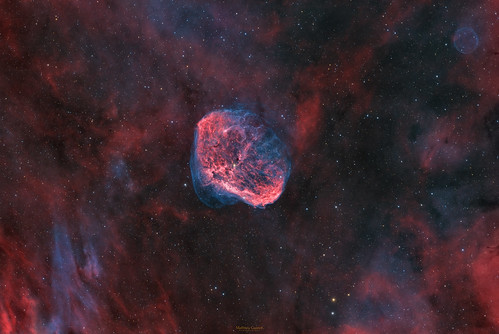 Crescent and Soap Bubble HOO by Mathieu Guinot, sur Flickr
Crescent and Soap Bubble HOO by Mathieu Guinot, sur FlickrHi all!
Here is the famous summer target made up of the pair formed by the Crescent and the Soap Bubble nebulae, located 5000 light-years away in Cygnus.
Both were formed at a final phase in the life of a star but they are very different. Also known as NGC 6888, the Crescent was shaped as its central massive Wolf-Rayet star (WR 136) shed its outer envelope in a strong stellar wind, being near the end of a short life that should finish in a spectacular supernova explosion. The Soap Bubble Nebula is likely a planetary nebula, the final shroud of a lower mass, long-lived, sun-like star destined to become a slowly cooling white dwarf.
I chose and like very much the HOO rendition on that famous pair.
The Oiii exposures were captured without any Moon, in order to get the maximum of the weakest extensions of the Crescent, and the Halpha exposures with a little presence of the Moon, all from my backyard in Bortle 6 all along those short nights of the July month.
Telescope TOA130 fl645
Mount Eq6-r pro
Camera ZWO 2600mm & Antlia filters Ha and Oiii 3.5nm
HOO processing with Pixinsight & Photoshop
Ha : 113 x 300s
Oiii : 153 x 300s
-
sitexodus
Re: Submissions: 2023 July
https://flic.kr/p/2oRXisT
https://flic.kr/p/2oRXmpE
https://flic.kr/p/2oRZrtn
Gawarrgay, Emu in the Sky
24 July 2023
@Tinderbox Marine Reserve, Tasmania, Australia
https://flic.kr/p/2oRXmpE
https://flic.kr/p/2oRZrtn
Gawarrgay, Emu in the Sky
24 July 2023
@Tinderbox Marine Reserve, Tasmania, Australia
-
Guest
Re: Submissions: 2023 July
https://flic.kr/p/2oRUrqt
Aurora Australis, Milky Way and Emu in the Sky
23 July 2023
@Tinderbox Marine Reserve, Tasmania, Australia
Aurora Australis, Milky Way and Emu in the Sky
23 July 2023
@Tinderbox Marine Reserve, Tasmania, Australia
-
Julien Looten
- Ensign
- Posts: 34
- Joined: Tue Mar 08, 2022 7:08 pm
Re: Submissions: 2023 July
The milky way and The Summer Triangle above a french castle
Copyright: Julien Looten


A starry night in the courtyard of Château de Losse (Dordogne, France)..
Above the castle, the Milky Way, our galaxy, is made up of many stars and nebulae. On the right is the "galactic bulb", that is to say the center of our galaxy, from which emanate the nebulae of the Lagoon, Trifid, the Eagle, Omega, as well as the cloud of Sagittarius. On the left, many red nebulae make up the constellation Cygnus. I chose this composition (where the milky way is not centered) so that the "summer triangle" is perfectly in the center of the image, so that the top of the triangle points downwards, in direction of the castle... Connoisseurs easily identify the three stars that form this triangle: Deneb at the top left, Vega at the top right, and Altair further below in the center of the image...
Exif : 42 x 13 s - Canon 6D Astrodon + Sigma 28mm f1.4 Sigma France - Leofoto tripod - Ps and Autopano
Facebook : https://www.facebook.com/Julien.Looten. ... &ref=notif
Instagram : https://www.instagram.com/p/CvKrEzeMbgY/
Copyright: Julien Looten


A starry night in the courtyard of Château de Losse (Dordogne, France)..
Above the castle, the Milky Way, our galaxy, is made up of many stars and nebulae. On the right is the "galactic bulb", that is to say the center of our galaxy, from which emanate the nebulae of the Lagoon, Trifid, the Eagle, Omega, as well as the cloud of Sagittarius. On the left, many red nebulae make up the constellation Cygnus. I chose this composition (where the milky way is not centered) so that the "summer triangle" is perfectly in the center of the image, so that the top of the triangle points downwards, in direction of the castle... Connoisseurs easily identify the three stars that form this triangle: Deneb at the top left, Vega at the top right, and Altair further below in the center of the image...
Exif : 42 x 13 s - Canon 6D Astrodon + Sigma 28mm f1.4 Sigma France - Leofoto tripod - Ps and Autopano
Facebook : https://www.facebook.com/Julien.Looten. ... &ref=notif
Instagram : https://www.instagram.com/p/CvKrEzeMbgY/
-
Guest
Re: Submissions: 2023 July
 SN2023ijd by Dave & telescope, on Flickr
SN2023ijd by Dave & telescope, on FlickrA lot of excitement surrounded the discovery on May 19 of Supernova 2023ixf in the "Pinwheel Galaxy" M101.
However only about 5 days before SN 2023ixf blew up, another star went through it's last moments of life and subsequently blew up in another galaxy about three times as far away from us as M101. Consequently this supernova was not as bright as the one in M101 but it occurred in the fascinating interacting galactic pair of NGC 4568 and 4567, part of the Virgo Galaxy Cluster. The "host" galaxy is NGC 4568 which is the larger of the two and is where supernova SN2023ijd occurred.
Although I started this project two days before the supernova was discovered, I missed a couple of days due to weather when the discovery actually happened
The discovery is credited to the All Sky Automated Survey for Supernovae based out of Ohio State University
Capture info:
Location: SkyPi Remote Observatory, Pie Town NM US
Telescope: Officina Stellare RiDK 400mm
Data: LRGB 22 hours
Thanks for looking!
Dave Doctor
daveandtelescope.wordpress.com
Re: Submissions: 2023 July
The Seahorse Nebula - Barnard 150
The dust obscures the light of the stars and we observe curious shapes.
EQUIPMENT:
Orion Optics 14"
ZWO ASI2600MC Pro
Mount Losmandy Titan
Frames: 270×60"
LOCATION: Àger (LLeida, Spain)
DATES: 07/14/23 and 07/15/23
https://www.instagram.com/jaumezr/
The dust obscures the light of the stars and we observe curious shapes.
EQUIPMENT:
Orion Optics 14"
ZWO ASI2600MC Pro
Mount Losmandy Titan
Frames: 270×60"
LOCATION: Àger (LLeida, Spain)
DATES: 07/14/23 and 07/15/23
https://www.instagram.com/jaumezr/
Re: Submissions: 2023 July
Category: Tracked/Blended/Composite
The Lonely Tree
 The Lonely Tree by Ahmed Waddah, on Flickr
The Lonely Tree by Ahmed Waddah, on Flickr
Image is a blended composite where the foreground was shot during beginning of blue hour and sky shot after astronomical twilight. Image was shot on the 21st of July in Al Fayoum Desert in the Valley of Whales in Egypt. Foreground is a focus stack of 6 images. Valley of Whales is a national park in the western desert of Egypt as well as a UNESCO heritage site which contains invaluable fossil remains of the earliest, and now extinct, suborder of whales, Archaeoceti.
Sky: 21x180" - ISO 1000 - f/2.8- 24mm (Nikon Z6II (Stock) - Nikkor Z 14-24mm f/2.8 S)
Foreground: 6x30s - ISO 100 - F/8 - 24mm (Nikon Z6II (Stock) - Nikkor Z 14-24mm f/2.8 S)
Ioptron Sky Guider Pro
https://www.astrobin.com/vt5tgp/
Social:
Facebook: https://www.facebook.com/waddah.photography
Astrobin: https://www.astrobin.com/users/WolfHeart/
IG: https://www.instagram.com/waddahphotography/
The Lonely Tree
 The Lonely Tree by Ahmed Waddah, on Flickr
The Lonely Tree by Ahmed Waddah, on FlickrImage is a blended composite where the foreground was shot during beginning of blue hour and sky shot after astronomical twilight. Image was shot on the 21st of July in Al Fayoum Desert in the Valley of Whales in Egypt. Foreground is a focus stack of 6 images. Valley of Whales is a national park in the western desert of Egypt as well as a UNESCO heritage site which contains invaluable fossil remains of the earliest, and now extinct, suborder of whales, Archaeoceti.
Sky: 21x180" - ISO 1000 - f/2.8- 24mm (Nikon Z6II (Stock) - Nikkor Z 14-24mm f/2.8 S)
Foreground: 6x30s - ISO 100 - F/8 - 24mm (Nikon Z6II (Stock) - Nikkor Z 14-24mm f/2.8 S)
Ioptron Sky Guider Pro
https://www.astrobin.com/vt5tgp/
Social:
Facebook: https://www.facebook.com/waddah.photography
Astrobin: https://www.astrobin.com/users/WolfHeart/
IG: https://www.instagram.com/waddahphotography/
Re: Submissions: 2023 July
Celestial Wavelength
Location - Death Valley California USA
Credit - Roi Levi
Date - April 2023 new moon
My Latest Work Of Capturing Our Cosmos, i shot this panorama in Death Valley National Park
During my USA tour in April, I led New Moon deep space workshops for astrophotography enthusiasts in Death Valley National Park with my partner@Jay Anne Boza California. In between these workshops, I decided to explore new locations with dark skies and search for unique mud cracks.
A friend named Ralf Rohner tipped me off about finding mud cracks on the side of the road near the dunes. He provided me with coordinates and encouraged me to explore the area without specifying a particular spot.
As I reached the side of the road, I noticed a mountain in front with water cascading down its slopes. On the opposite side of the road, the terrain sloped downhill. My imagination sparked, envisioning water drainage lines that might lead to intriguing formations such as hoodoos, mushrooms, or mud cracks. In the desert, following water trails often reveals captivating wonders.
Trusting my instincts and experience, I set out on foot to find the elusive mud cracks. As daylight started to fade, I walked for about 35 minutes without any sign of them. However, just before darkness engulfed the surroundings, I stumbled upon them. That night, the skies were adorned with a stunning display of red and green airglow, casting a mesmerizing glow on the LCD screen.
To capture this extraordinary scene, I employed a tracked panorama blend technique using the following gear and sponsored equipment:
Tripod: Sunwayfoto
Rotator: Silence Corner Atoll
Filter: Optolong L Extreme
Control: Pro Timer
Focusing system: Focus on star filter
Tracker: iOptron SkyGuider Pro
Camera: Canon EOS RA
Lens: Sigma Art 28mm F1.4
The EXIF data for the tracked sky frames were as follows:
1 row, 6 panels, each exposed for 90 seconds at ISO 800
6 panels using Optolong L Extreme, each exposed for 90 seconds at ISO 1600
For the foreground, I utilized an untracked technique and focus-stacked the images. The EXIF data for the foreground shots were as follows:
3 rows focus stack, with 3 frames per panel
Each panel in the 6 rows was exposed at F11 and ISO 100 during the serene blue hour
You can explore more of my astrophotography on Instagram https://www.instagram.com/astroi_levi/?hl=en
visit our website
www.deepspaceworkshops.com.
I hope you enjoyed reading about my adventure and my astrophotography setup!
Clear Skies
Location - Death Valley California USA
Credit - Roi Levi
Date - April 2023 new moon
My Latest Work Of Capturing Our Cosmos, i shot this panorama in Death Valley National Park
During my USA tour in April, I led New Moon deep space workshops for astrophotography enthusiasts in Death Valley National Park with my partner@Jay Anne Boza California. In between these workshops, I decided to explore new locations with dark skies and search for unique mud cracks.
A friend named Ralf Rohner tipped me off about finding mud cracks on the side of the road near the dunes. He provided me with coordinates and encouraged me to explore the area without specifying a particular spot.
As I reached the side of the road, I noticed a mountain in front with water cascading down its slopes. On the opposite side of the road, the terrain sloped downhill. My imagination sparked, envisioning water drainage lines that might lead to intriguing formations such as hoodoos, mushrooms, or mud cracks. In the desert, following water trails often reveals captivating wonders.
Trusting my instincts and experience, I set out on foot to find the elusive mud cracks. As daylight started to fade, I walked for about 35 minutes without any sign of them. However, just before darkness engulfed the surroundings, I stumbled upon them. That night, the skies were adorned with a stunning display of red and green airglow, casting a mesmerizing glow on the LCD screen.
To capture this extraordinary scene, I employed a tracked panorama blend technique using the following gear and sponsored equipment:
Tripod: Sunwayfoto
Rotator: Silence Corner Atoll
Filter: Optolong L Extreme
Control: Pro Timer
Focusing system: Focus on star filter
Tracker: iOptron SkyGuider Pro
Camera: Canon EOS RA
Lens: Sigma Art 28mm F1.4
The EXIF data for the tracked sky frames were as follows:
1 row, 6 panels, each exposed for 90 seconds at ISO 800
6 panels using Optolong L Extreme, each exposed for 90 seconds at ISO 1600
For the foreground, I utilized an untracked technique and focus-stacked the images. The EXIF data for the foreground shots were as follows:
3 rows focus stack, with 3 frames per panel
Each panel in the 6 rows was exposed at F11 and ISO 100 during the serene blue hour
You can explore more of my astrophotography on Instagram https://www.instagram.com/astroi_levi/?hl=en
visit our website
www.deepspaceworkshops.com.
I hope you enjoyed reading about my adventure and my astrophotography setup!
Clear Skies
-
Galactic-Hunter
- Ensign
- Posts: 26
- Joined: Wed Jul 08, 2020 3:13 pm
Re: Submissions: 2023 July
Hi,
Here is an image I would like to submit for APOD.
I took this single shot picture at Grand Canyon during a clear night in July 2023. The sky is tracked (2 minutes exposure) and the foreground is not tracked (1 minute exposure). No stacking was involved.
It shows how colorful the night sky really is when doing long exposure photography. Here, we see so much cool in the sky, Milky Way band, green air glow, and stars. It is especially impressive considering that this was aiming at the opposite side of the bright Summer Milky Way core, and instead towards the faint part of the band. The Andromeda Galaxy is also visible!
Thank you.
Credit:
Antoine and Dalia Grelin
https://www.galactic-hunter.com/
 Colors of the night sky - Milky Way at Grand Canyon
Colors of the night sky - Milky Way at Grand Canyon
Here is an image I would like to submit for APOD.
I took this single shot picture at Grand Canyon during a clear night in July 2023. The sky is tracked (2 minutes exposure) and the foreground is not tracked (1 minute exposure). No stacking was involved.
It shows how colorful the night sky really is when doing long exposure photography. Here, we see so much cool in the sky, Milky Way band, green air glow, and stars. It is especially impressive considering that this was aiming at the opposite side of the bright Summer Milky Way core, and instead towards the faint part of the band. The Andromeda Galaxy is also visible!
Thank you.
Credit:
Antoine and Dalia Grelin
https://www.galactic-hunter.com/
 Colors of the night sky - Milky Way at Grand Canyon
Colors of the night sky - Milky Way at Grand Canyon